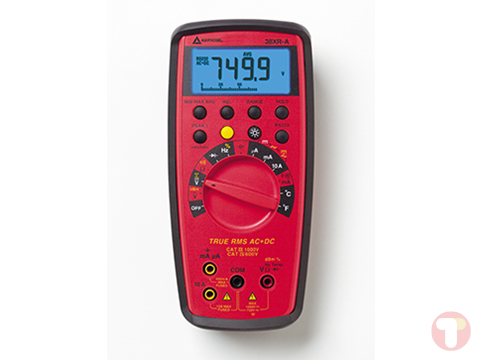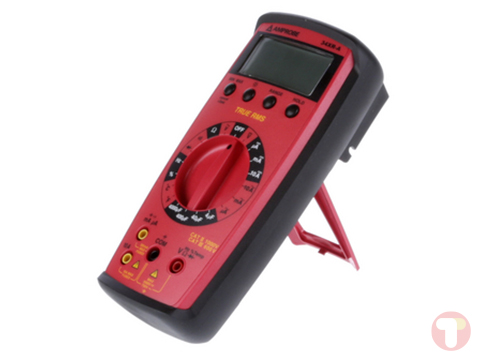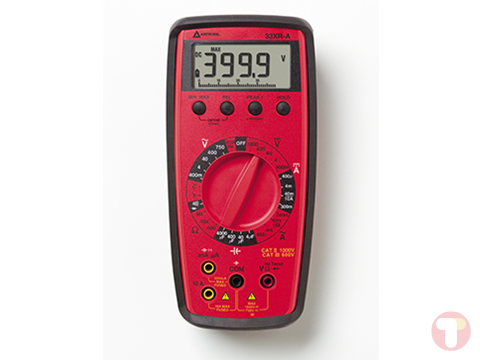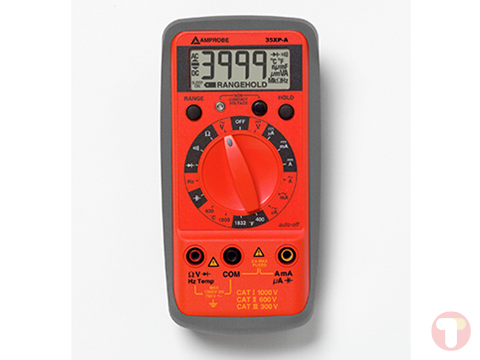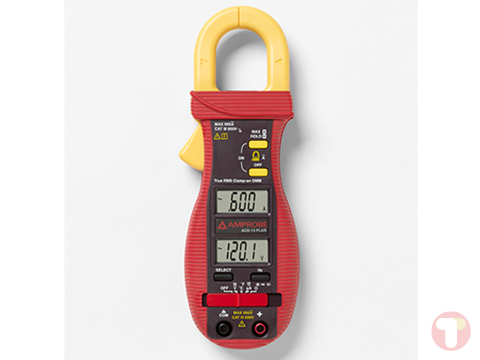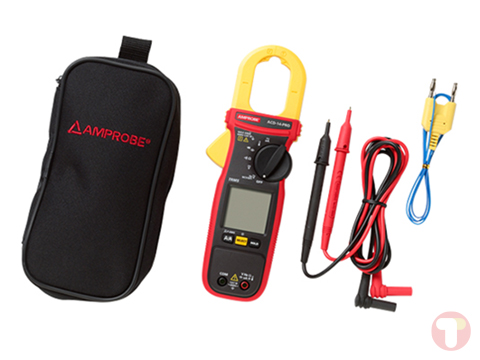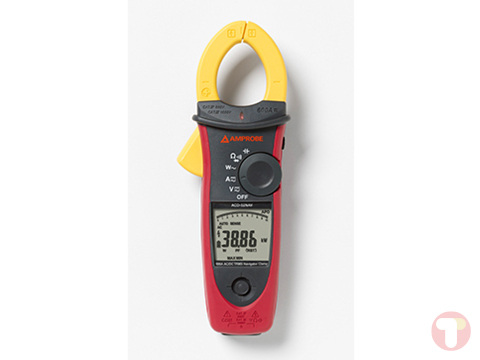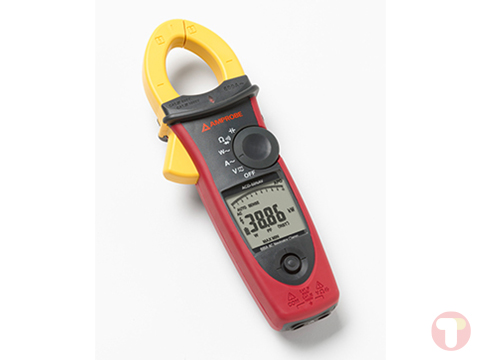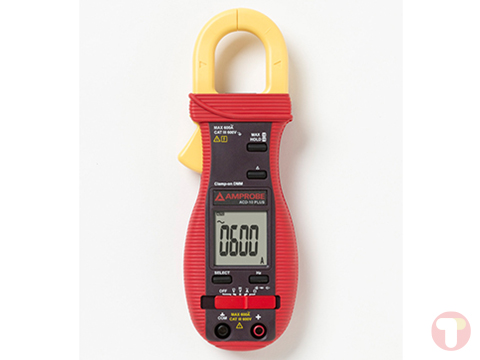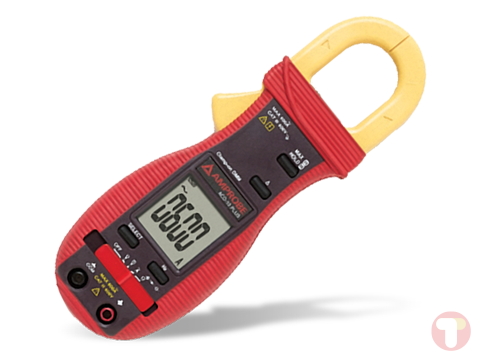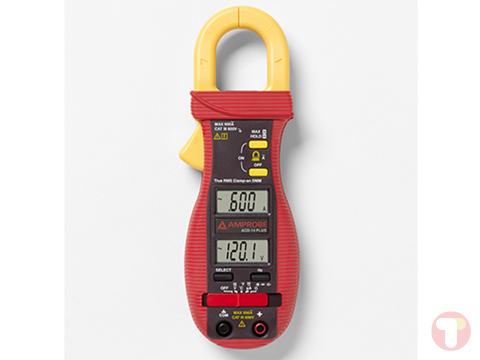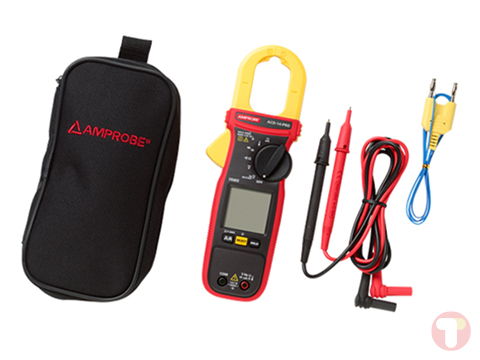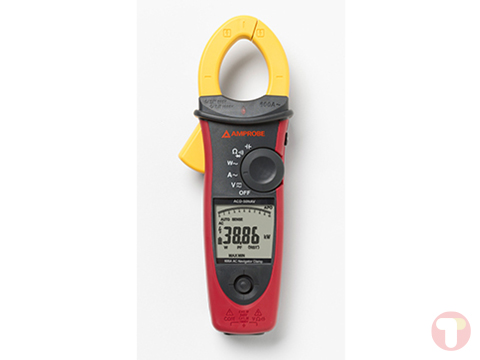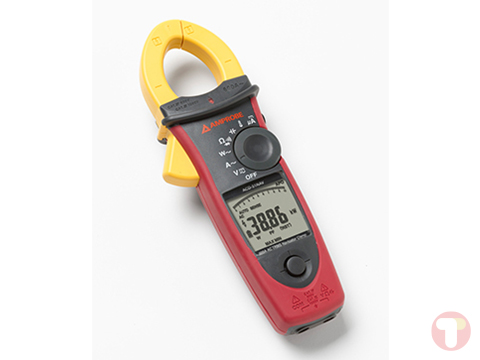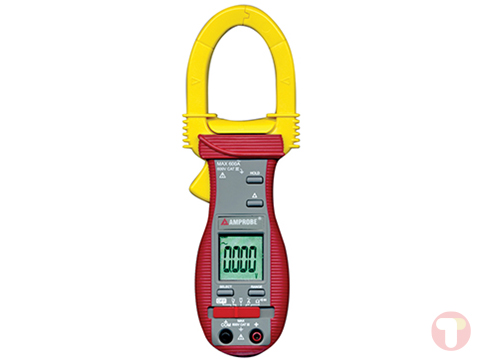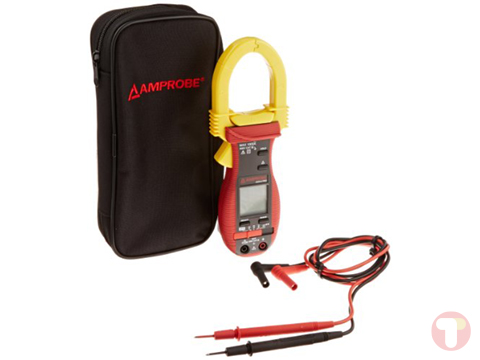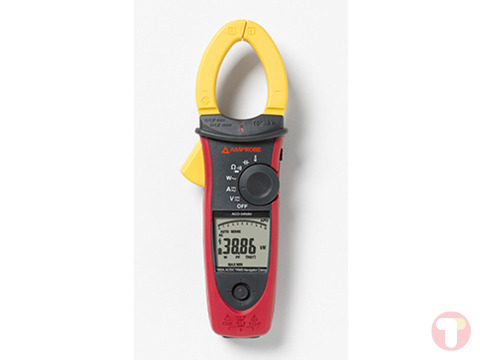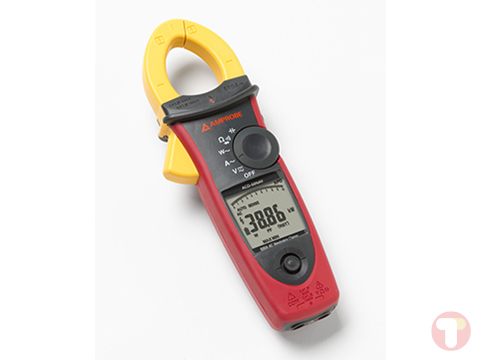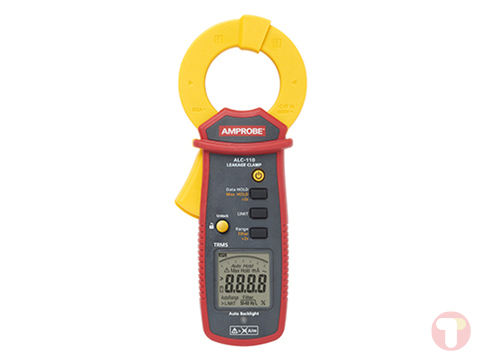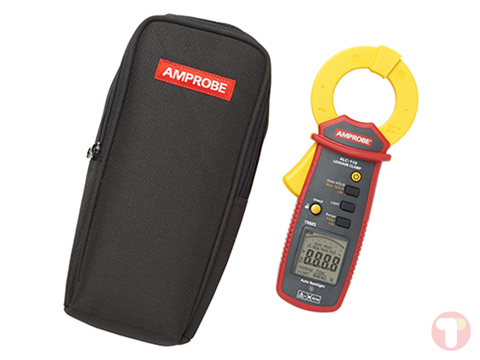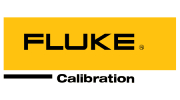The Amprobe 34XR-A is a True RMS digital multimeter with temperature measurement. The 34XR-A includes all the features and functions needed for a wide range of applications.
The Amprobe 34XR-A measures DC voltage to 1000 V, AC voltage to 750 V, AC/DC current to 10 A, resistance to 40 MΩ, capacitance to 4000 °F, frequency to 1MHz and temperature to 1832 °F.
The 34XR-A digital multimeter also has a continuity beeper, diode test, overload protection, and measures duty cycle. All measurements have wide testing ranges and high accuracy. Testing results are displayed on the 3-3/4 digit LCD with 41-segment analog bar graph. The meter also features Min/Max, Data Hold and Range Lock; Auto power-off and a separate door for battery and fuse access. The included Magne-Grip holster and magnetic hanging strap make the meter convenient for contractors and field service technicians.
Why you need a True-RMS Reading Multimeter
True-RMS instruments are accurate on any AC waveform. There are two basic AC measuring systems. One is “average sensing, RMS indicating.” This is the most common system because it is affordable and easy to manufacture. An instrument with this type of measuring system measures the average of a sine wave, and then multiplies it by 1.112, allowing the instrument to indicate RMS. This measuring system is only accurate on sine waves.
The second measuring method is called “RMS Sensing, RMS Indicating.” An instrument with this type of measuring system computes the RMS value of the measured waveform (sine or otherwise). This is referred to as “True-RMS” reading. This measuring system is accurate for any waveform. When an average sensing instrument is used on a non-sinusoidal waveform, measurement accuracy could be off as much as 50%. Since you may not know what type of AC waveform you are measuring, a True-RMS instrument should be used whenever possible.

